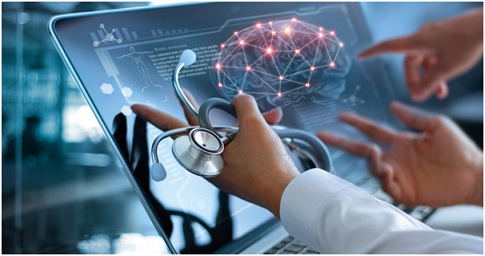Over the past years, inventions in medicine have seriously influenced our lives and society. The MedTech sector is helping to speed up access to new technologies in medicine. They improve the quality of treatment and speed up diagnostics. And they also make healthcare affordable for patients who find it difficult to get an appointment with a specialist.
IT in healthcare is a relatively new thing. As Quiix notes, with the help of high technologies, it helps patients and doctors. For example, it allows us to exchange information on distance and track the condition of patients. It even helps to make more accurate conclusions on analyzes. And, of course, to organize data and to get rid of physical document circulation. Technologies in healthcare guide through the transformation of many processes.
What Is Health Information Technology
Now investing in medical technologies is becoming more relevant. New tasks and needs have emerged. For example, to get a “second opinion” from a doctor far away. The pandemic also brought up the need to develop medicines, and to improve the efficiency of medical institutions.
The health IT industry does not aim to replace doctors and medical professionals. No automated system today will be able to take into account an individual set of factors when making a diagnosis in each specific case. MedTech is necessary to make the work of the medical staff more convenient. And also to improve the diagnosis and treatment of patients, to bring this process to a new level.
At the same time, the role of technology only increases over time. Today medicine is strongly associated with the analysis and processing of large amounts of data. Thus, the need for productive systems for processing, analyzing and storing information is growing.

ALT: A laptop screen with brain and small detectors which is examined by doctors
Examples Of Technology In Healthcare
How can modern solutions be useful for patients? Here are some examples of already widely used tools that make our life easier, and doctors more accessible.
Health sensors for portable diagnostics
Wearable medical devices allow patients to measure almost any health parameter right at home. Also smartphones are biosensors in some sense. And this means that health information and data will eventually be available not only to the doctors, but also to laypersons. This is how people can get the opportunity to better track their health. And, moreover, to better manage their body.
The lifestyle will adapt to the requirements of such devices, which will make us healthier. There are already apps that teach how to eat, we will soon be able to measure the number of calories in the food we eat. We can also already measure blood oxygen saturation, changes in our heart rate, ECG, EEG and much more.
Augmented reality
Some doctors are already using Google Glass to broadcast the progress of surgery to medical students. It allows them to learn in a completely new way. Such a device allows a doctor to talk with a patient during appointment without turning away from the monitor. For example, to read his medical record or enter new information there.
There is more. Evena glasses allow nurses to see the veins through which blood is flowing for accurate injections into the blood vessels. The possibilities that arise with such technologies are almost endless.
Artificial Intelligence
Nowadays, AI in medicine is often used to detect objects or segment images. This helps doctors to identify deviations from the norm more accurately. Another interesting experience of using AI is ultrasound diagnostics during pregnancy. During ultrasound diagnostics, the system measures the size of the fetus with an accuracy of 97–99% with one click of the mouse. The assessment takes about 85 milliseconds. This eliminates the human factor and relieves the doctor’s working time.
Social Media For Patient Safety
This is not a real or unique technology. But in general, social media plays a large role in initiating the process of patient participation in healthcare. Today, patients have access to all medical information about themselves. Before it was only available to medical professionals.
Moreover, it is already becoming possible to contact other people who have the same medical problems. An example of such an organization of communication is SmartPatients. It is an online community where patients and their caregivers exchange experiences. For instance, about patient care, treatment, clinical cases. Also the latest scientific data, learning how all this is suitable for their particular case. It is possible to chat about everything – life, cooking advice, even about the best crypto trading bots.
All this significantly increases the information available to patients. And thus, prevents blind diagnosis, or the absence of informed consent. In a world where you can double-check your doctor, medicine is getting way more trustable.